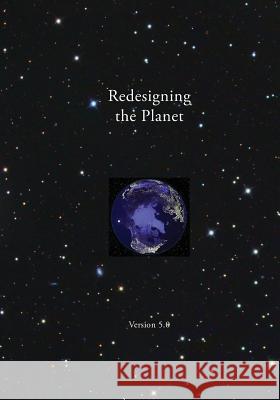Redesigning the Planet: Global Ecological Design » książka
Redesigning the Planet: Global Ecological Design
ISBN-13: 9781497575912 / Angielski / Miękka / 2014 / 672 str.
This work is about physical, ecological and political designs for sharing the global resources and services of the planet to meet the needs of all living beings and their community patterns. It uses ecological design to create a simple method to implement and manage the sharing. First, we assess what the planet needs to develop in a stable flow, then we set aside a satisfactory area of the planet to ensure the continuing operation of evolution in wild systems. Next, we measure the ranges of productivities of wild ecosystems as well as agricultural and urban systems, and use those results to determine optimum human populations for local places, regions and the planet. Finally, within human systems, every culture would claim a share of local resources and global services not set aside for wild regeneration. The equal apportionment of resources to all cooperating participants in the global commons is supported by the practice of recognizing and honoring the 'legacy' of the entire planet that hosts its legatees as tenants, and is supported by the 'rule' of all beings, although in the human legal system, humans represent the interests of all other beings, much as we are starting to do now. This reapportionment is enhanced by the wisdom of harmony and by the drawing and making of ecological zones, which emphasize ranges of separation of wild and artificial areas. This reapportionment of 'resources' that human communities have already claimed, as well as of resources that have been badly distributed as a result of theft or violence, may cause some degree of discomfort or suffering for wealthier people, but that is minimal compared to the suffering and death under the current industrial system, which encourages overconsumption and large, immoral differences in the distribution of wealth. Ecological design would work on local and regional scales, as well as on the global scale. Like metaphysics, ecological design has a vision that exceeds its bounds and a reach that exceeds its grasp. And, we have to use it to explore possibilities of local and global harmony, without having complete knowledge or experience. Ecological design requires participation and cooperation to accomplish its ambitious goals. It has to be flexible and adapt to changing environments. This means understanding challenges and problems, as well as natural and artificial ecosystems, histories and cycles, before using a variety of physical and conceptual tools to create ecological designs on local scales, but considering the regional and global implications. This means trying to design places, ecosystems and landscapes, as well as cycles and processes. It means redesigning flows of minerals and gases, wetlands and streams, domestic and wild forests, and animal paths and reserves. It means redesigning human patterns, from transportation corridors to traditional and modern cultures. It means redesigning agriculture, cities-traditional cities and proposed arcologies-buildings, neighborhoods, vehicles, industries, and medicine. It means trying to redesign social traps, cultural adaptations, corporate goals and responsibilities, formal commons, styles of conflict, economic frameworks, political forms and sizes, religious applications, and even advertising. And, the purpose of all this is to restore harmony to systems that support and encourage health and development, under emergency conditions.
Zawartość książki może nie spełniać oczekiwań – reklamacje nie obejmują treści, która mogła nie być redakcyjnie ani merytorycznie opracowana.











